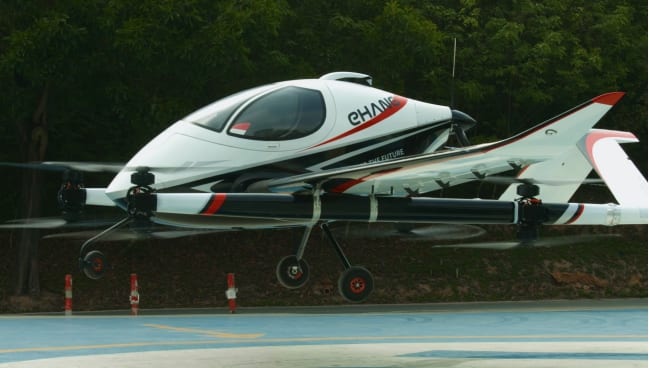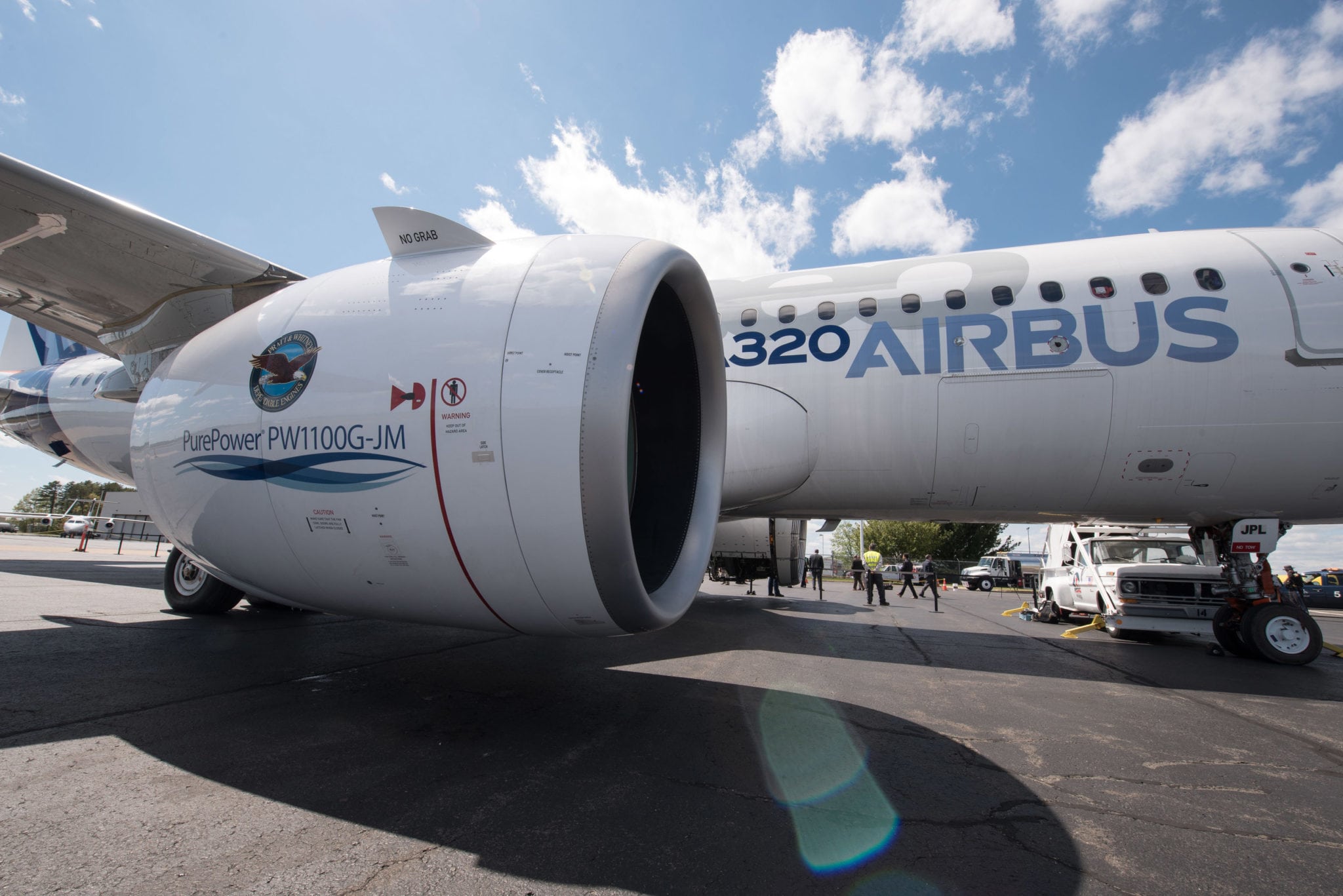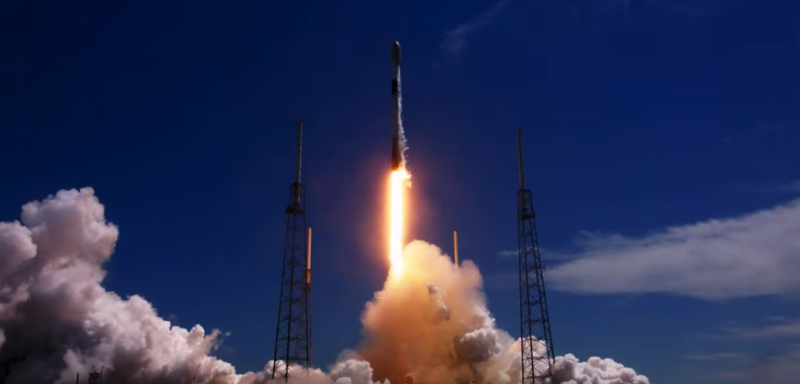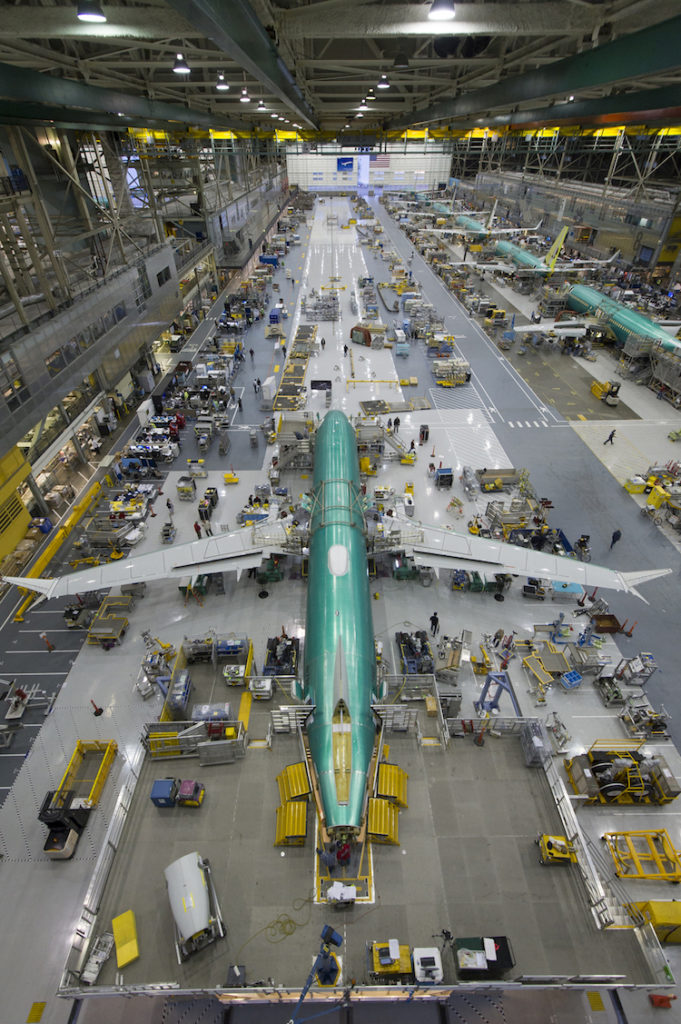What’s Trending in Aerospace – May 30, 2021

Check out the May 30 edition of What’s Trending in Aerospace, where editors and contributors for Avionics International bring you some of the latest headlines and updates happening across the global aerospace industry.
Commercial
Airbus Gives Update on Production Plans

Airbus expects to ramp up its production rate for its A320 family, including the A320neo pictured here. (Airbus)
Airbus provided suppliers with a production update on its aircraft in anticipation that the commercial aircraft market recovery will hit pre-pandemic levels in 2023 and 2025 and be led by the single-aisle segment, according to a May 27 press release.
For the A320 family, Airbus is expecting a production rate of 45 aircraft per month in Q4 of 2021 and is asking suppliers to enable a scenario of rate 70 by Q1 of 2024, according to the release. The A220 and A350 families’ rates are currently around five aircraft per month and will rise to six in early 2022. The A330 family production rate remains at two per month.
“The aviation sector is beginning to recover from the COVID-19 crisis,” Guillaume Faury, Airbus CEO, said in a statement. “The message to our supplier community provides visibility to the entire industrial ecosystem to secure the necessary capabilities and be ready when market conditions call for it. In parallel, we are transforming our industrial system by optimizing our aerostructures set-up and modernizing our A320 Family production facilities. All these actions are set in motion to prepare our future.”
Honeywell, Curtiss-Wright 25-Hour Flight Data Recorder Certified by EASA

The European Aviation Safety Agency (EASA) certified the 25-hour Flight Data Recorder (FDR), HCR-25, made by Honeywell and Curtiss-Wright for the air transport market. (Curtiss-Wright)
The European Aviation Safety Agency (EASA) certified the 25-hour Flight Data Recorder (FDR), HCR-25, made by Honeywell and Curtiss-Wright for the air transport market, the company announced in a May 26 press release.
“The partnership of Honeywell and Curtiss-Wright continues our shared legacy as pioneers and innovators of crash-protected recorders, with both companies taking leadership roles in providing flight recorders to the industry for over 60 years,” Chris Wiltsey, Senior Vice President and General Manager at Curtiss-Wright Defense Solutions division, said in a statement. “We are proud to work closely with Honeywell to bring extended operation and greater survivability for flight data recorders to the aviation market, enhancing these critical technologies with next-generation features such as real time streaming connectivity and new levels of performance.”
The FDR is based on Curtiss-Wright’s Fortress technology and goes beyond the requirements of each of the International Civil Aviation Organization (ICAO) defined flight recorder types while adding real time data streaming support, according to the release. Certification of the HCR-25 FDR variant follows the EASA TSO certification issued for the HCR-25 cockpit voice recorder (CVR) in January.
“The new regulatory requirement provided a great opportunity to strengthen our recorder technology and provide our customers with solutions that fit their needs,” Amanda King, vice president and general manager of Connected Secure Solutions at Honeywell Aerospace, said in a press statement. “We worked alongside Curtiss-Wright to design and develop a new generation of recorders that leverages our full hardware and software expertise to meet the 25-hour requirement, and identify the right information and make it available to accident investigation agencies when it’s most needed.”
Connectivity
Delta Expands Viasat In-flight Connectivity Order to More than 230 Additional Aircraft
Delta Air Lines is expanding its January order for Viasat in-flight connectivity (IFC) to more than 230 aircraft within its domestic fleet, according to a May 26 press release.
Under this expansion, select aircraft from Delta Air Lines’ Airbus 321neo, Airbus 220-300, Boeing 737-800, Airbus 320ceo and Airbus 319 fleets will be retrofitted with Viasat’s Ka-band satellite technology, according to the release.
“A single Viasat high-capacity Ka-band satellite antenna will power IFC while simultaneously providing live TV access to the seatback screens,” the company said in the release.
This new aircraft award is in addition to the more than 300 Delta aircraft already announced in January 2021.
Military
US Air Force Proposes Divestments of 201 Aircraft, Big Increases for GBSD, NGAD
The U.S. Air Force fiscal 2022 budget request proposes the retirement of 201 aircraft to help pay for $28.8 billion in requested research and development (R&D) funding—a $2.2 billion increase over the fiscal 2021 enacted level.
While the Air Force procurement budget has been billions of dollars more than the service R&D budgets in the past, fiscal 2022 marks the third consecutive year that the Air Force has asked for more in base R&D dollars than base procurement dollars. In fiscal 2022, the U.S. Air Force acquisition request, not including the U.S. Space Force, is $22.9 billion—$5.9 billion less than the R&D request.
The proposed Air Force fiscal 2022 aircraft divestments, including the retirements of 48 Boeing F-15C/Ds, 42 A-10s, 18 KC-135s, 14 KC-10s, 47 Lockheed Martin F-16C/Ds and eight C-130Hs, 20 Northrop Grumman Block 30 RQ-4 Global Hawk drones and four Joint STARS aircraft, would save nearly $1.4 billion, the Air Force said.
The service wants to position itself to face Russia and China while sustaining its capacity for engagements with less technologically advanced potential adversaries.
The Air Force requests more than $1.5 billion for the Next Generation Air Dominance (NGAD) program–a $623 million increase from the fiscal 2021 enacted amount—and more than $2.5 billion for the Northrop Grumman Ground Based Strategic Deterrent (GBSD)—$1.1 billion more than funded in fiscal 2021—to replace the Boeing Minuteman III ICBMs. The service also proposes $3.3 billion for the Northrop Grumman B-21 Raider stealth bomber in fiscal 2022, an increase of $474 million—including $30 million more in R&D to prepare for B-21 initial production, and $3.2 billion in procurement for 14 Boeing KC-46 tankers to bring the total number of planes to 71.
Hurricane Hunters Get a Software Update
The 53rd Weather Reconnaissance Squadron “Hurricane Hunters” aerial reconnaissance weather officer (ARWO) and loadmaster/dropsonde operator stations are getting hardware and software upgrades to increase their capabilities, according to a May 25 release.
“This upgrade on the ARWO pallet and in regards to the hardware, software and development, to include replacing the monitors to keep up with the new information and data processing, are vital to keeping us up-to-date with the weather community,” Tech. Sgt. Michael Gehl, 403rd MXS meteorology technician, said in a statement. “We work hand-in-hand with engineers and developers from the 580th (Software Engineering Squadron) and (Air Force Reserve Command) for testing and developing any of the equipment that the weather community requests.”
The Hurricane Hunters fly a special WC-130J Super Hercules aircraft into storms to gather weather information, according to the release.
“The (Meteorology Equipment Technician) shop is in the middle of a system upgrade, specifically on the ARWO station,” Maj. Tobi Baker, 53rd WRS ARWO, said in a statement. “It’s a major overhaul because the hardware and software that we use is specialized and a lot of the programs and components are made in-house.”
One of the main upgrades is updating the computer operating systems from Windows XP to Windows 10, according to the release.
“To give you a sense of time, the computers on the ARWO pallet were brand new in 2005 and now they’re all being updated to the current technology,” Master Sgt. Alexander Mitchell, 403rd MXS MET noncommissioned officer in charge, said in a statement. “Originally we were in the middle of upgrading from XP to Windows 7, but due to Air Force’s Windows 10 compliance, it delayed us in testing and implementing that software and hardware in 2018.”
Space
SpaceX Launches 4 Starlink Missions in 1 Month, Expands Service to Belgium, Netherlands

A SpaceX Falcon 9 rocket launches 60 Starlink satellites on May 26. (SpaceX)
SpaceX launched a batch of 60 Starlink satellites on Wednesday afternoon, and announced that Starlink service is now available in Belgium and the Netherlands. This was the 13th dedicated Starlink mission of 2021, and the fourth Starlink mission for the month of May.
The Falcon 9 rocket took off from Space Launch Complex 40 at Cape Canaveral Space Force Station in Florida at 2:59 p.m. ET. The satellites were successfully deployed about 1 hour and four minutes into the mission. The first stage booster successfully touched down on a drone ship in the ocean about eight and a half minutes into the mission. In addition, this was the first-ever mission in which SpaceX flew a fairing half for the fifth time.
During the launch webcast on May 26, Youmei Zhou, a Dragon propulsion engineer, said that SpaceX was expanding Starlink’s broadband internet beta service to Belgium and the Netherlands. Service is now available in the United States, Canada, New Zealand, Australia, and several locations around Europe.
“To date, over half a million people have placed an order or put down a deposit for Starlink. With every launch, we get closer to connecting more people across the world,” Zhou said.
Lockheed Martin and General Motors Partner for Next-Gen Rover

A new generation of lunar rovers under development by Lockheed Martin and GM could be used by Artemis astronauts to extend and enhance the exploration of the surface of the Moon. (Lockheed Martin)
Lockheed Martin and General Motors will be partnering to develop a next-generation lunar rover to transport astronauts on the surface of the moon for NASA’s Artemis program, according to a May 26 release.
“This alliance brings together powerhouse innovation from both companies to make a transformative class of vehicles,” Rick Ambrose, executive vice president, Lockheed Martin Space, said in the release. “Surface mobility is critical to enable and sustain long-term exploration of the lunar surface. These next-generation rovers will dramatically extend the range of astronauts as they perform high-priority science investigation on the Moon that will ultimately impact humanity’s understanding of our place in the solar system.”
Lockheed Martin will lead the team and brings experience from its work on spacecraft like NASA’s Orion, according to the release. GM will share its expertise on battery-electric technologies and propulsion systems as well as autonomous technology.
“General Motors made history by applying advanced technologies and engineering to support the Lunar Rover Vehicle that the Apollo 15 astronauts drove on the Moon,” Alan Wexler, senior vice president of Innovation and Growth at General Motors, said in a statement. “Working together with Lockheed Martin and their deep-space exploration expertise, we plan to support American astronauts on the Moon once again.”
Unmanned
Inmarsat Invests in UAV Growth With 2 Executive Appointments

Jon Holmes, left; and Mark ter Hove, right. (Inmarsat)
Inmarsat continues to refresh its senior management team with new two high-profile appointments to target the Unmanned Aerial Vehicle (UAV) market. Inmarsat announced in a May 27 press release it has appointed Jon Holmes as senior director of UAV Technology and Mark ter Hove as senior manager of European Market Development. The company said Holmes and ter Hove will drive Inmarsat’s plan to be the leading connectivity partner in what it sees as a burgeoning sector.
Inmarsat cited a 2019 report by the Teal Group “World Civil Unmanned Aerial Systems 2019 Market Profile & Forecast,” which forecasts the number of UAVs flying in airspace to increase tenfold from 1.1 million to 10 million by 2027, with impacts on emergency services, disaster relief and surveillance, cargo delivery, inspection, and urban transport. Inmarsat entered the commercial UAV market in 2020.
Holmes will be responsible for creating Inmarsat’s roadmap for UAV products and services, working with customers, partners, and internal stakeholders. ter Hove will be responsible for evaluating customer and market opportunities in Europe to reinforce Inmarsat as the leading provider of connectivity products and services in the field of UAV BVLOS (Beyond Visual Line of Sight) operations.
Thales Partners with Airspace Link for UAS ATM System
Thales and Airspace Link formed a new partnership to integrate ground risk data from state and local governments into unmanned aircraft systems (UAS) air traffic management (ATM) system, according to a May 27 press release.
“We envision a future where manned and unmanned aviation operate together seamlessly,” Jean Ferré, Vice President of Airspace Mobility Solutions at Thales, said in a statement. “Thales’ investment and partnership with Airspace Link is an important step forward toward this reality.”
The information will include the location of schools, power lines and firework displays, according to the release.
The two companies have previously worked together on Vantis, the state-wide UAS network in North Dakota.
eVTOLs
EHang Adds Long-Range eVTOL

The VT-30 is made for inter-city transportation with a range of 300 km and up to 100 minutes of flight time. (EHang)
EHang announced a new electric vertical take-off and landing (eVTOL), VT-30, for long range flights, according to a May 26 press release.
The VT-30 is made for inter-city transportation with a range of 300 km and up to 100 minutes of flight time, according to the release.
“Our passenger-grade AAV EH216 is already fully equipped to travel in the cities with its lightweighted and streamlined structure, and the launch of the VT-30 provides a powerful complement to the inter-city air traffic network by meeting needs for covering longer distance,” Huazhi Hu, Founder, Chairman and CEO of EHang, said in a statement. “Moving forward, these two product series will be used as core development for a service-oriented operations strategy to improve the safety, duration and capacity for carrying both passengers and goods. We will work continuously to obtain regulatory certification for our various AAV products, including the VT-30, and provide a more convenient and efficient public urban air mobility operational services.”
Regulation
FAA Downgrades Mexico to Category 2
The Federal Aviation Administration (FAA) announced that it would downgrade Mexico’s rating to Category 2 after an assessment of its civil aviation authority found that the government of Mexico does not meet International Civil Aviation Organization (ICAO) safety standards, the agency announced in a May 25 press release.
This rating change will prevent Mexican carriers from creating any new services or routes but allows them to continue any existing service in the United States, according to the release. The rating change will also mean that U.S. airlines can no longer market and sell tickets with their names on them to Mexican-operated flights and Mexican airline flights to the U.S. will also be under heightened scrutiny.
FAA is Looking to Fund Environmental Projects at Airports
The Federal Aviation Administration (FAA) is looking for airports to participate in the Environmental Mitigation Pilot Program which will fund six projects with positive environmental impacts, the agency announced in a May 25 press release.
The program is looking for projects that will reduce or mitigate aviation impacts on noise and air or water quality at or within five miles of an airport, according to the announcement. Airports have until July 9 to submit an application and be considered. The cost of each project cannot exceed $2.5 million and it must be completed within 24 months, according to the release.
The FAA will be choosing six projects in 2022 and 2023 that provide the largest environmental benefits.
FAA Rules on Airport Solar Panels
The Federal Aviation Administration (FAA) published a final policy requiring airports to measure visual impacts of solar projects, according to a May 26 release. Projects including solar panels have become more common as the aviation industry seeks to invest in this technology for environmental and economic benefits.
The policy is aimed at ensuring that solar panels do not create a hazardous glare for pilots and air traffic control personnel, and it applies to solar energy systems at public airports that have accepted federal assistance, according to the release.
The policy states that airports must file a Notice of Proposed Construction including a statement that the project will not cause any visual impact instead of submitting an ocular analysis to the FAA, according to the statement.
Boeing to Pay $17 Million in Penalties

Boeing 737 Max production line at the Renton Factory. (Boeing)
The Boeing Company will pay at least $17 million under a settlement agreement with the Federal Aviation Administration (FAA) on the 737 MAX cases, according to a May 27 press release.
“The FAA found that the Chicago-based manufacturer installed equipment on 759 Boeing 737 MAX and NG aircraft containing sensors that were not approved for that equipment; submitted approximately 178 Boeing 737 MAX aircraft for airworthiness certification when the aircraft potentially had nonconforming slat tracks installed; and improperly marked those slat tracks,” the agency said in the release.
The post What’s Trending in Aerospace – May 30, 2021 appeared first on Aviation Today.
Check FastApn access for commercial satcoms at Fastapn
Flytlink – Avionics, Satcom’s and IFE Consultants






